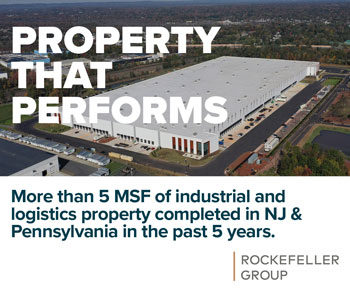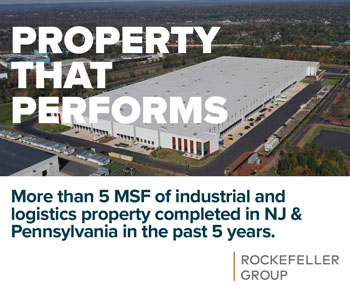By Joshua Burd
It’s the type of requirement that public officials might often dream about: A global company wants to open a 1 million-square-foot distribution or manufacturing center just a few miles outside Port Newark-Elizabeth, proposing to bring thousands of high-paying jobs to the state.
There is just one problem — it will be years before the company can put a shovel in the ground.
As the Smart Growth Economic Development Coalition has found, there are just a handful of large-scale, remediated and entitled sites in and around the port region of northern New Jersey. The lack of supply is a glaring problem, the group argues, given the growth trajectory of e-commerce, logistics and other large industrial users that are willing to pay a premium to be here.
It’s why the coalition has set out to develop a plan for what it describes as “making land” in the heart of northern New Jersey. That means everything from repurposing government-owned facilities in prime locations to having the state take a lead role in acquiring, assembling and cleaning up individual parcels in order to create large development sites near the port.

“Our comparative advantage is why we’re out of space,” said Morris Davis, academic director and Paul V. Profeta chair at the Rutgers Center for Real Estate. “There is an opportunity in New Jersey. It’s a massive growth opportunity, but how do we take advantage of it?”
Davis, who chaired the coalition’s committee on making land, said the group has identified two areas of opportunity. The first is in land that is owned by a government entity or a quasi-public agency, such as a utility or a transportation authority.
“Some of these parcels are strategically located,” Davis said, citing examples such as a Department of Transportation salt dome along the New Jersey Turnpike. But he noted that there is currently no way for the private sector to purchase those parcels.
The other bucket identified by the committee is privately owned land that is unused due to contamination. Some developers have experience in acquiring and cleaning up polluted sites, Davis said, but such projects come with major risks and uncertainty over the amount of time, money and regulatory approvals needed to complete them.
According to the coalition, this is where the government comes in.
The group argues that a public agency could play a role in determining the value of government-owned land so that it could be sold to developers. For privately held sites, the agency would be best-suited to determine the level of contamination, determine a fair market price and evaluate the properties as part of a larger redevelopment area.
The government could also use its power of condemnation to force the owners to sell, Davis said, although he acknowledged that such a proposal is likely to be controversial.
“This is where I think there is debate. Are we actually going to tell our legislators it’s time to condemn?” Davis said. “I don’t think there’s any better use of condemnation power because the land is vacant, it’s toxic, it’s been dead for decades — and the act of condemnation will be to clean it and provide high-wage jobs and local and state tax revenues.”
Once the state has managed to assemble, remediate and entitle a site, the coalition believes the trick is to sell it with the condition that the buyer must develop the property within a certain timeframe.
If the current market conditions continue, there will be no shortage of demand. Recent land sales for well-located industrial sites have garnered upwards of $1 million per acre.
“It’s reflective of the fact that we’re going through this transformation from the economy that we’ve had in the past — manufacturing — to quickly becoming the country’s top distribution market,” said Michael McGuinness, the CEO of NAIOP New Jersey.
Other recommendations
While the state may have a role in assembling privately held sites, the coalition believes it’s just as important to keep an eye on the bigger picture.
Specifically, the group is recommending that the state create redevelopment zones around any sites that it would look to acquire and remediate. Doing so would unlock key benefits, such as lowering the cost of remediation and underwriting insurance policies for the cleanups.
Giving the state the authority to create redevelopment zones would require legislation, Davis said, acknowledging that the decisions could butt up against local land use controls. But he believes the state will have earned the right to make those decisions.
“The thought is that, since the state is taking up all of the risk of redeveloping parcels that were dead, it should have control of the process,” Davis said. “The local communities could have done this. They just chose not to, so because the state is being forced to do this redevelopment, it should also have control over the zoning.
“The agency that does this needs the authority to set the standards for these redevelopments that basically overlay local zoning.”










